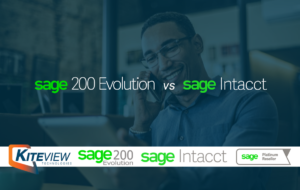Article credit: Sage
In this article, we’ll unpack CRM systems and explore how you can make a success of your investment with a winning customer relationship management strategy.
What are the benefits of CRM?
Increased sales and satisfied customers are obvious benefits of using a CRM. One study found that companies that use a CRM system report an average return on their investment of $8.71 for each dollar spent.
With a central view of your customers and leads, you can:
- Discover more sales opportunities,
- Send effective marketing messaging to leads, and
- Resolve customer problems faster.
Here are the top 10 benefits small and medium-sized businesses can realise when using a CRM system:
-
Reliable customer information
Within a CRM system, all your employees can find detailed information about your existing customers and leads. This includes contact details, information about their businesses, and details about previous calls and email exchanges.
-
Open data for all employees
In many organisations, information about customers is stored in the heads of key staff or in files that only people in one department can access. This makes it impossible for other employees to know what’s going on. A CRM makes this information available to everyone.
-
View interactions from all channels
Today’s customers make contact through a huge range of channels, or contact points, like telephone, email, or social media. A CRM gives you a central place where employees can get an overview of all interactions, regardless of channel.
-
Save repetition for customers
A big frustration for customers is being asked to repeat information to different service reps. As a CRM stores all information from previous interactions in a central place, this problem disappears.
-
Understand problems in your pipeline
A CRM gives you a full view of all marketing communications sent to clients. It can track how customers move down the pipeline, how they interact with salespeople, and how long it takes to close deals. With CRM analytics, you can pinpoint problems in your pipeline and change your strategy.
-
Maintain subscriptions
A customisable CRM can be designed to automate various stages of the customer lifecycle, like triggering automatic reminder emails to clients when a subscription is about to expire, or reminding your sales team to follow up.
-
Identify and categorise leads
One of the most important CRM concepts is the ability to categorise leads. A CRM can automatically flag warm leads. For example, if someone on your mailing list is frequently opening marketing emails or downloading brochures from your website, your sales teams can tailor messaging to that customer, based on his or her level of engagement.
-
Data-driven view of your pipeline
With CRM analytics, your sales and marketing decisions are not made on gut feeling. Rather, they’re based on concrete data that helps you decide the best approach.
-
Always up to date with mobile
Your sales staff specialise in visiting – or calling – customers and closing deals. A mobile CRM lets them record the outcome of their meetings in real time.
-
Reports and insights
A CRM can provide you with a powerful dashboard that can help you understand exactly how your customer-facing teams are performing – from sales calls logged, to marketing emails sent, and customer enquiries resolved.
An example of CRM in the workplace
Imagine a firm that provides storage solutions for expats who work part of the year in Nairobi. Without a CRM, different teams would store customer information in different ways:
- The customer service team has a spreadsheet that staff update each time they receive a call from a customer asking about their storage space.
- The marketing team tracks email blasts sent to existing customers on a different spreadsheet.
- The sales team cold-calls clients, while ‘warm leads’ are written on a whiteboard in the office.
There are countless ways that this storage firm could lose clients, while also missing out on opportunities. The customer service team might not notice that an account has come up for renewal; the sales team cannot see which customers have read emails sent by the marketing team; and different members of the sales team often call the same client multiple times, which only irritates them.
By introducing an easy-to-use CRM, the company would avoid all these problems while boosting efficiency, improving the customer experience, and increasing turnover.
What is a CRM strategy?
A CRM strategy helps you to deploy a CRM in the most effective way for your business. Like most technologies, employees may be averse to trying something new, especially if they can’t understand how it will benefit them. A CRM strategy is about making the tool easy for your employees to use, and ensuring it supports your wider business goals.
Here’s our six-step plan for creating your own CRM strategy:
Step 1: Review how your customer-facing teams are currently working
Map how departments interact and identify break points and communication issues.
Step 2: Set goals for your CRM project
You can only have a plan if you know the destination, so set goals that you can easily measure. This could be improving customer satisfaction by 50% or doubling the number of conversions.
Step 3 : Map out steps towards full deployment
Work out a clear plan for achieving your longer-term business objectives.
Step 4: Train employees on how to use your CRM
Provide CRM training sessions that are tailored to the different teams in your business, so that they get the most out of using the software.
Step 5: Start small then deploy wider
Trial your CRM with a single department – typically the sales or marketing team. This can generate curiosity from other teams when they see the success that department is having and motivate them to use the tool.
Step 6: Monitor CRM success
Have you achieved your original goals with your CRM?
Your CRM will evolve with your organisation. If you’re just starting out, you might only need a simple platform. However, by the time you have 50 employees using the tool every day, you will need something scalable, sophisticated, and customised to your needs.
Kiteview Technologies (Pty) Ltd was founded in May 2010 to provide the Sage Evolution Business Management solution to the SME market. The management team of Kiteview have combined +30 years of experience in the delivery of small to mid-market Financial & Business Management solutions. This experience, combined with a sound project implementation methodology has helped in Kiteview’s growth, becoming a Platinum status partner for SAGE Pastel within just 1 year.
Contact Us
For An Obligation Free Quote








